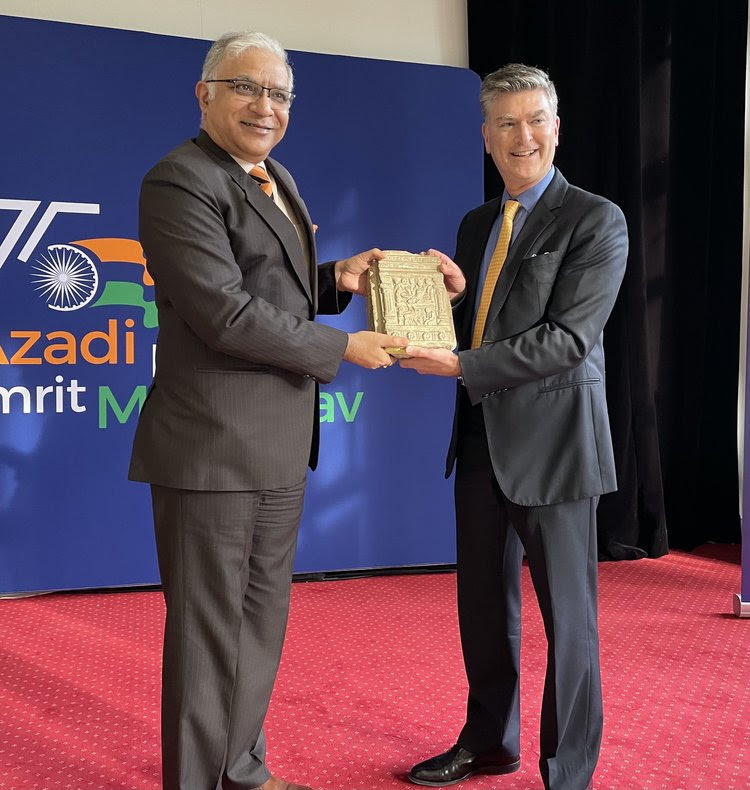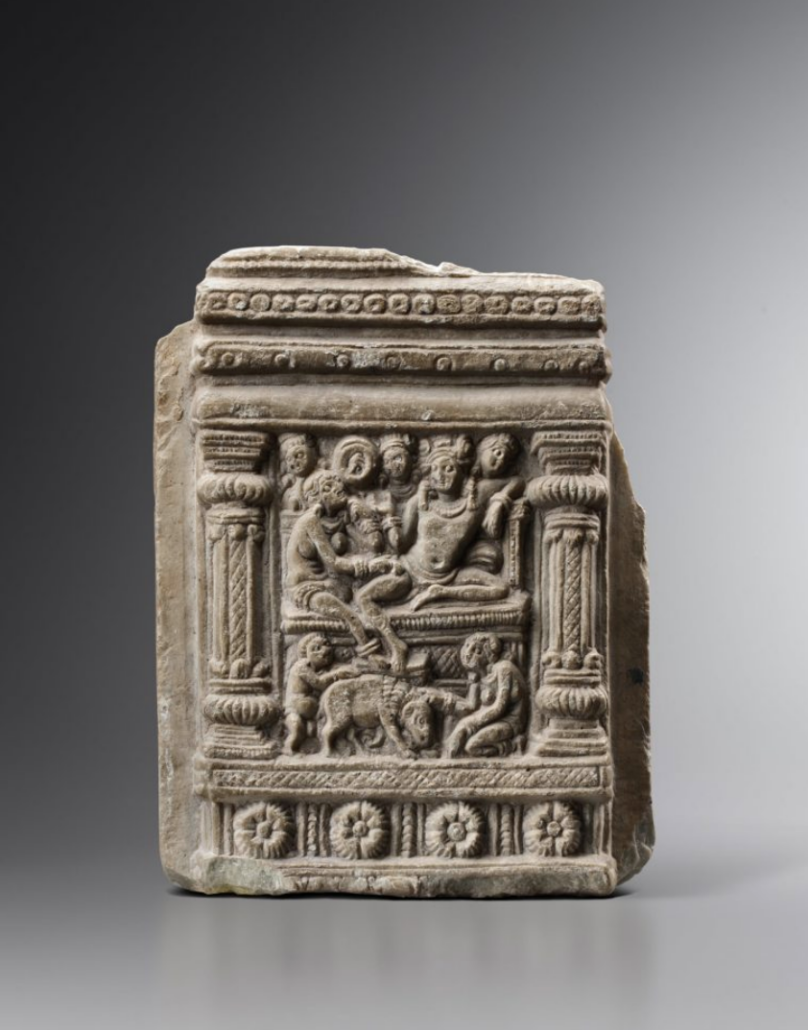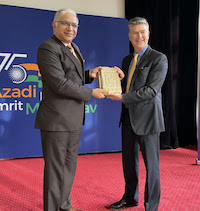
BRUSSELS, Belgium – Art Recovery International has announced the recovery of a part of India’s cultural heritage dating from the second half of the 3rd century. This is the third such repatriation of stolen and looted Indian art in the last three months for Art Recovery International (ARI) working in partnership with The India Pride Project (IPP).
Earlier this year, IPP Co-founder S. Vijay Kumar informed ARI Founder Christopher A. Marinello that the stolen limestone relief had been offered for sale in 2018 by the Asian art trade in Belgium. The purchaser had relied on a certificate of clearance from a UK-based organization that regularly mints such forms of documentation for the art trade as a substitute for proper due diligence without conducting provenance research on well-documented and published antiquities.
Within a few weeks, Marinello tracked down the possessor of the sculpture and negotiated an unconditional release of the artwork to the government of India. The piece was formally relinquished to Ambassador Santosh Jha at the High Commission of India in Brussels in mid-March.

The limestone upper panel of a pilaster bas-relief was part of the ruined stupas at Nagarjunakonda, Andhra Pradesh, and housed in a major Indian museum until it was stolen on or about 1995, when it was last photographed in situ by an art historian. This same scholar reached out to one of IPP’s volunteers after he discovered the piece being offered for sale at a Belgian art fair.
The stupa pilasters illustrate incidents in the life of Buddha. The recovered sculpture shows a court scene from Stupa 3 in Nagarjunakonda, which dates to the second half of the third century. A royal couple sits at ease on a throne, attended by servants who stand behind the throne back while a female servant and a child play with a ram in the foreground.
Christopher A. Marinello credits those responsible and cooperative members of the art trade who are beginning to get the message about the vast number of illicit objects that have been openly sold for decades. “The problem of stolen and looted art is not exclusive to the theft victim. Possessors of illicit objects are increasingly cognizant that they cannot easily sell, exhibit or transport stolen artworks without facing possible seizure, legal proceedings and reputational damage. Good faith acquisition is not always a saving grace. We can offer a confidential and discreet way to resolve these title issues.”
S. Vijay Kumar said, “This is our third successful recovery in as many months with ARI and we are pleased with their ability to encourage good faith purchasers to do the right thing when faced with compelling evidence of theft and illicit removal. We are extremely grateful to the scholars and citizens who engage with us on a confidential basis to flag potentially problematic acquisitions or auction sales. We hope law enforcement in India and the museum custodians follow up with thorough investigations and museum audits. It is important to note that this is only one fragment that has been recovered, leaving lingering questions about what else has gone missing. We thank Chris for his pro bono work in restoring such valuable stolen artifacts and hopefully, we can solve many more such difficult cases in the future.”
# # #


